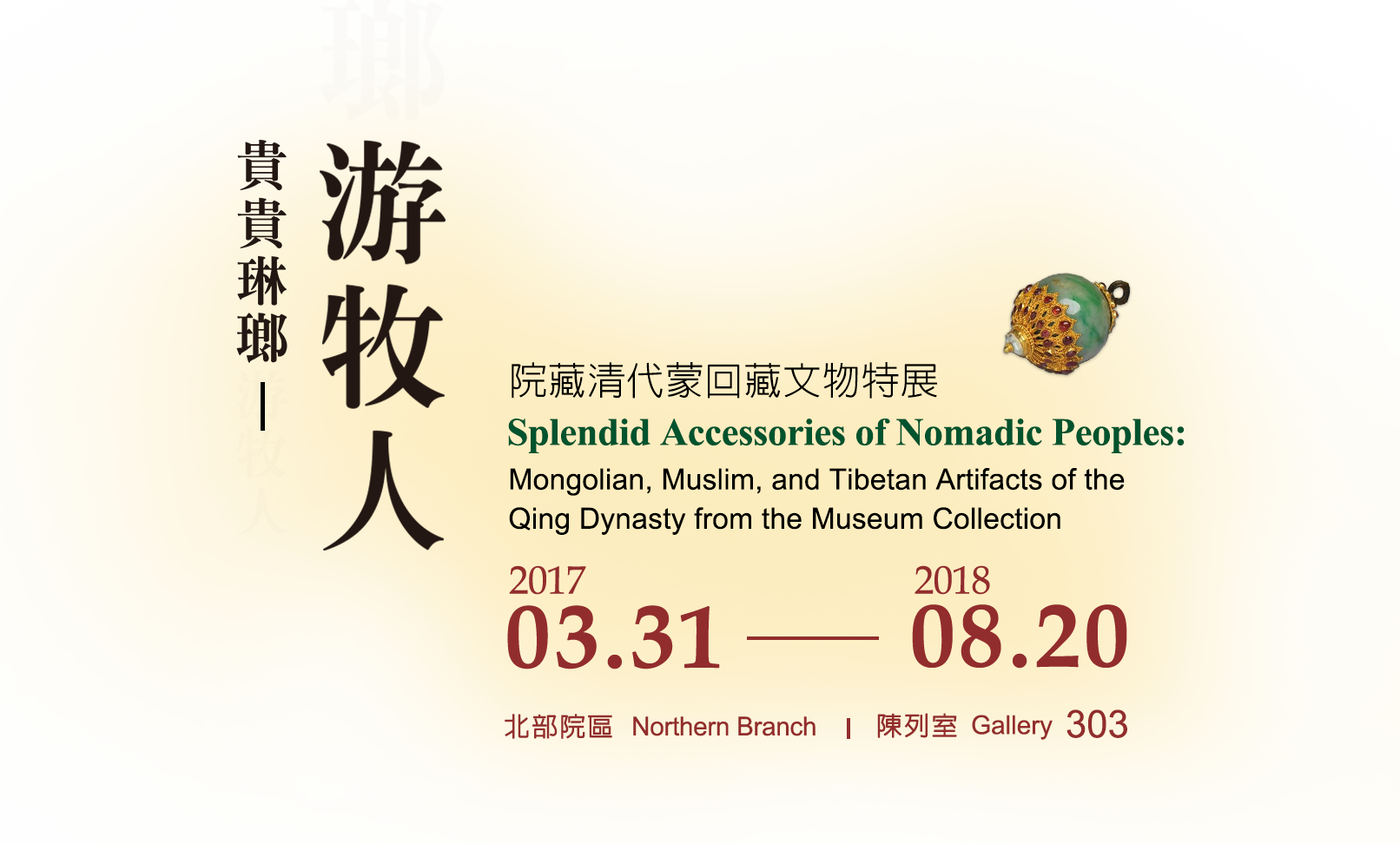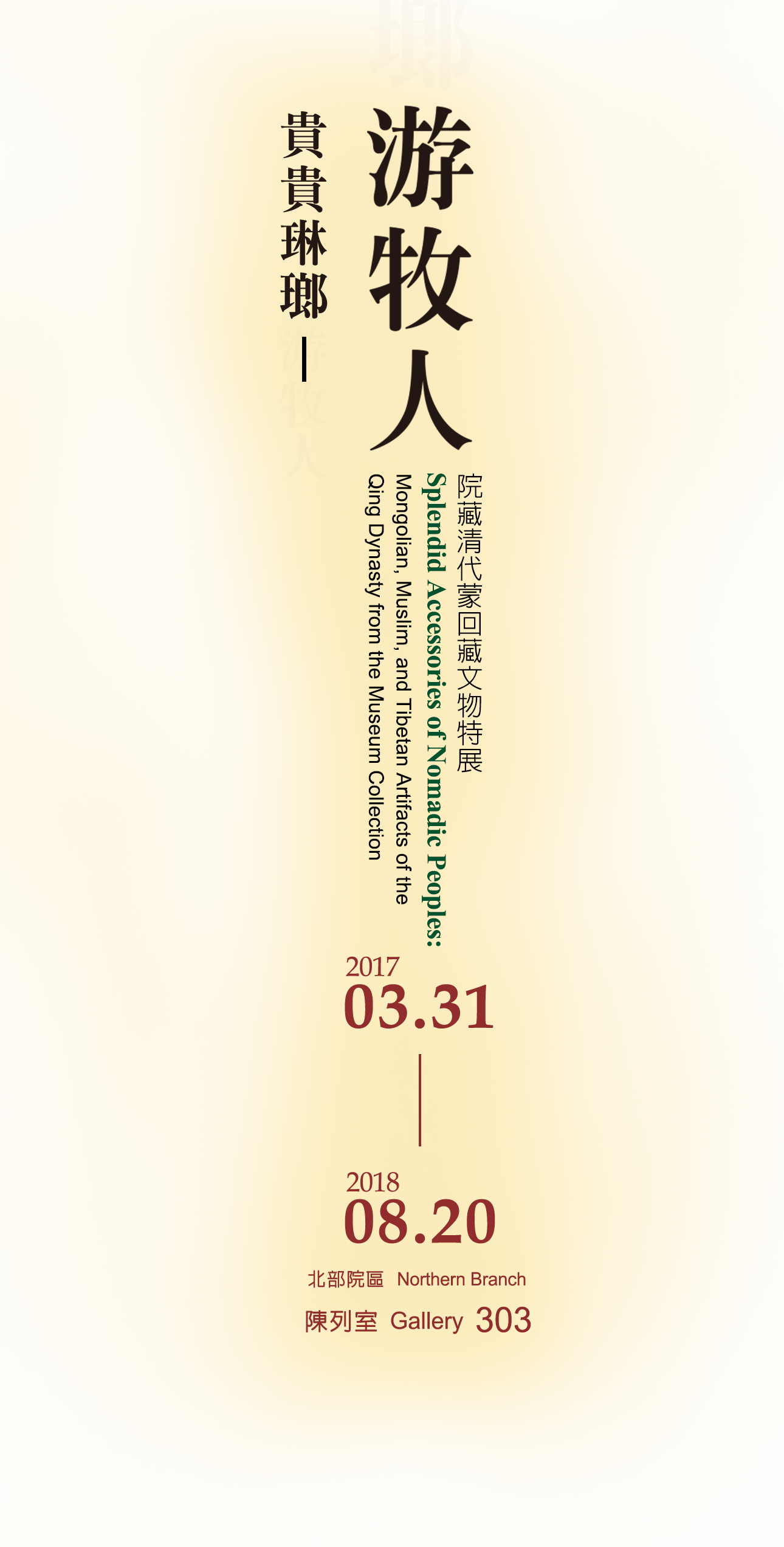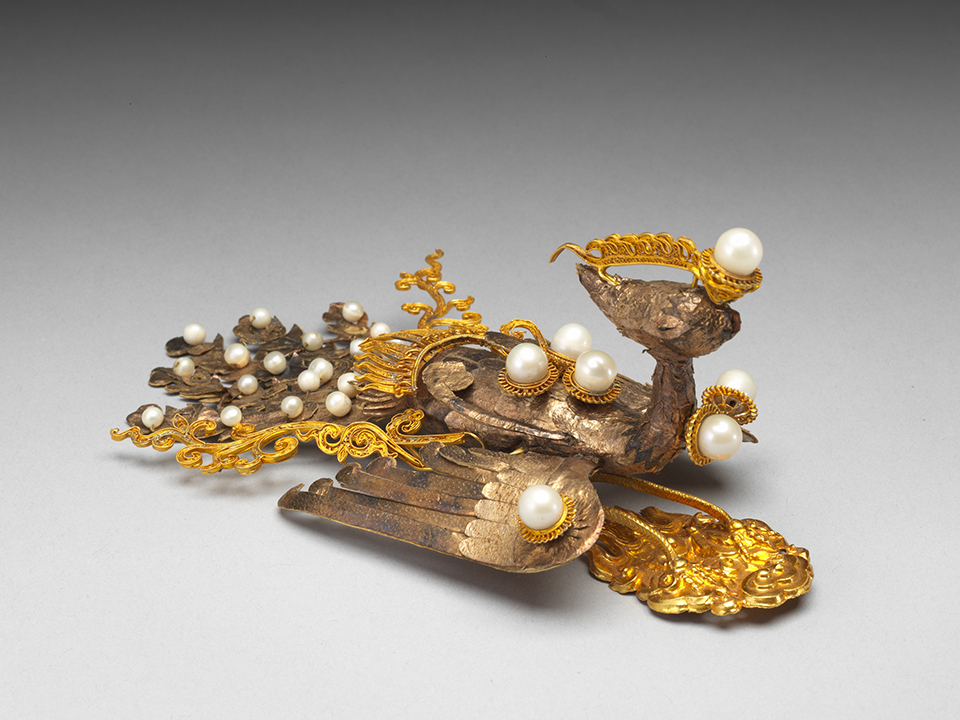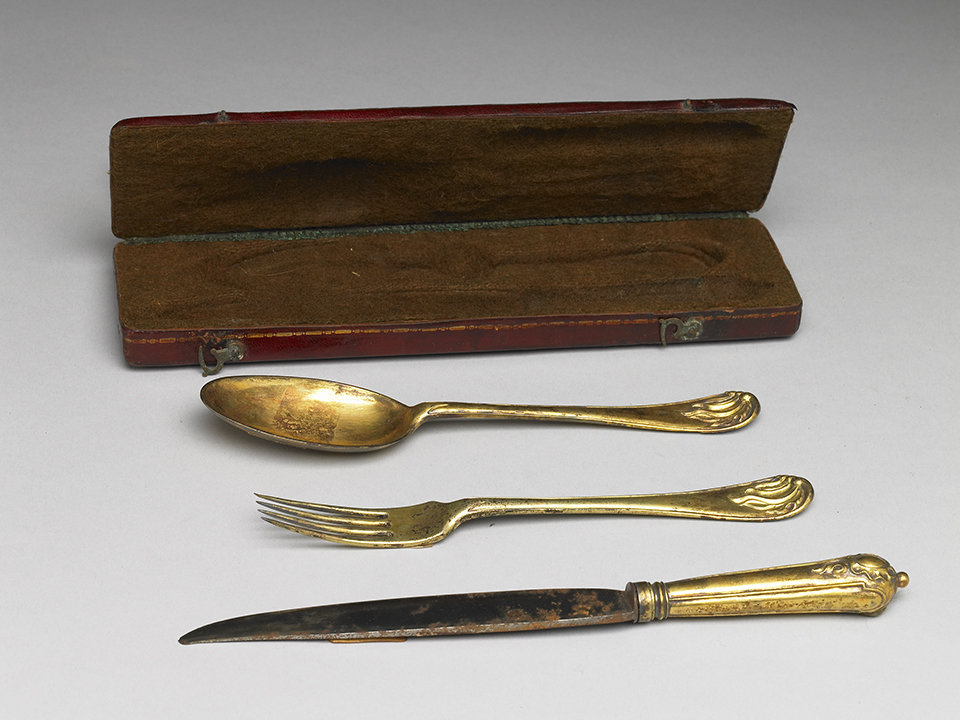Nomadism is a lifestyle of certain peoples often chosen in response to the natural conditions of the place where they live and usually involving the optimal use of limited resources. Following the customs and experiences they inherited, nomads move with their animals in keeping with the seasons. Livestock, such as horses, cattle, and sheep, is important to them, providing clothing, food, and transportation. Every part of the plants they encounter along the way is also utilized to make many of the things needed in life. These people often live in tent-like structures easy to erect and take apart, as vessels for food and drink are taken with them and not much else. Such basic necessities of life as wooden bowls and utensils, when given as presents, reflect their simple and practical values. The workmanship involved in such objects, however, is elegantly refined, amply demonstrating the maturity of arts and crafts among these nomads.
Birch-bark phoenix finial with gold inlay
- Qing dynasty, 18th-19th c.
- Qing court work
Birches are a tree species commonly found in northern temperate regions, whereas birch bark has been used by nomadic people to make objects such as house roofs and writing papers since ancient times. Birch bark, which is soft, flexible, light, and thin, had also been used to make the Gugu Guan (an oblong headdress covered with textiles) worn by aristocratic women during the Yuan dynasty. By examining the National Museum of Mongolia's collection of rare Yuan dynasty birch bark crowns (excavated from Yuan dynasty tombs) as well as the National Palace Museum's collection of Yuan dynasty empress and concubine portraits, visitors can gain insight into how birch bark had been used in the past. The birch-bark phoenix finial with gold inlay showcased here features a phoenix supported by a wooden frame on the inside and covered by birch bark on the outside. The crown, trailing edges of the wings, and feet of the phoenix as well as the cloud-shaped base of the artifact are decorated with gold leaves to make up the golden components, whereas the body and tail of the phoenix contain pearl inlays of varying sizes. The styles and designs of the phoenix are identical to those of the golden thread phoenix. The birch-bark phoenix finial with gold inlay had been commonly worn by Qing court empresses and concubines and is highly representative of the cultural characteristics of the nomadic people.
Wood bowl and gilt iron case inlaid with turquoise
- Qianlong imperial inscription dated to 1786, Qing dynasty
- Tibetan work
Wood bowls are the utensils that best illustrate the Mongolian and Tibetan eating habits and can be used to drink tea, hold tsampa, and store food. In addition, wood bowls are light, durable, easy to carry and can be used to preserve the taste of food as well as prevent the heat of the food from burning the hands. Wood bowls are generally made from birches, Rhododendron roots, or roots from a variety of trees; however, the most precious wood bowls are made from parasitic plants (especially a type of tumor called "zan" that is parasitic in mugwort roots). Since the time of the Kangxi era, Tibetan people had often offered wood bowls in early spring as tributes to the Qing court and to wish them a prosperous new year. The Qing court commonly used wood bowls to drink milk tea, earning the container the name "milk bowl." The practice of using the container to drink milk continued through the Yongzheng era. According to the Imperial Workshop Archives, Kalon Khangchenné Sonam Gyalpo offered wood bowls to the Qing court. Similarly, the Dalai Lama offered a set of five small and large wood bowls. The wood bowl and gilt iron hollow round case inlaid with turquoise exhibited here features a metal bowl made of delicate, light, and precious materials and displaying distinct and contrasting threadlike patterns, making this artifact set an example of the treasures offered by Tibetan aristocrats to the Qing court.
Gilt eating utensils, leather case, wood box
- Presented by the Torghut Ubashi Khan to the Qing court
- Qianlong imperial inscription dated to 1771, Qing dynasty
- Russian work
The Torghuts, one of the subgroups of the Four Oirats, migrated westwards to the Volga River downstream river basin by the end of the sixteenth century. Faced with the threat of Russian tsars in the late-eighteenth century, the Torghuts embarked on a journey back home to the East, where they were welcomed and appeased by the Qing court. The Torghuts then settled in the Ili River region. In 1771, Khagan Ubashi Khan (1742-1775), head of the Torghut clan, and his people travelled to the Rehe Mountain Resort to pay their respects to Emperor Gaozong of Qing (i.e., the Qianlong Emperor), where they offered fine Kazakhstan horses and white eagles. The artifact exhibited here is a set of folk, spoon, and dagger, which are placed inside a leather case, offered by Ubashi Khan to Emperor Gaozong of Qing. The leather case is decorated with geometric floral designs and exemplifies the gorgeous and smooth Russian Rococo style. The center of the leather case contains two lines of Mongolian writing. The Qing court subsequently made a wood box to hold the aforementioned utensils and inscribed the box cover with words to explain the significance of this set of special artifacts.




